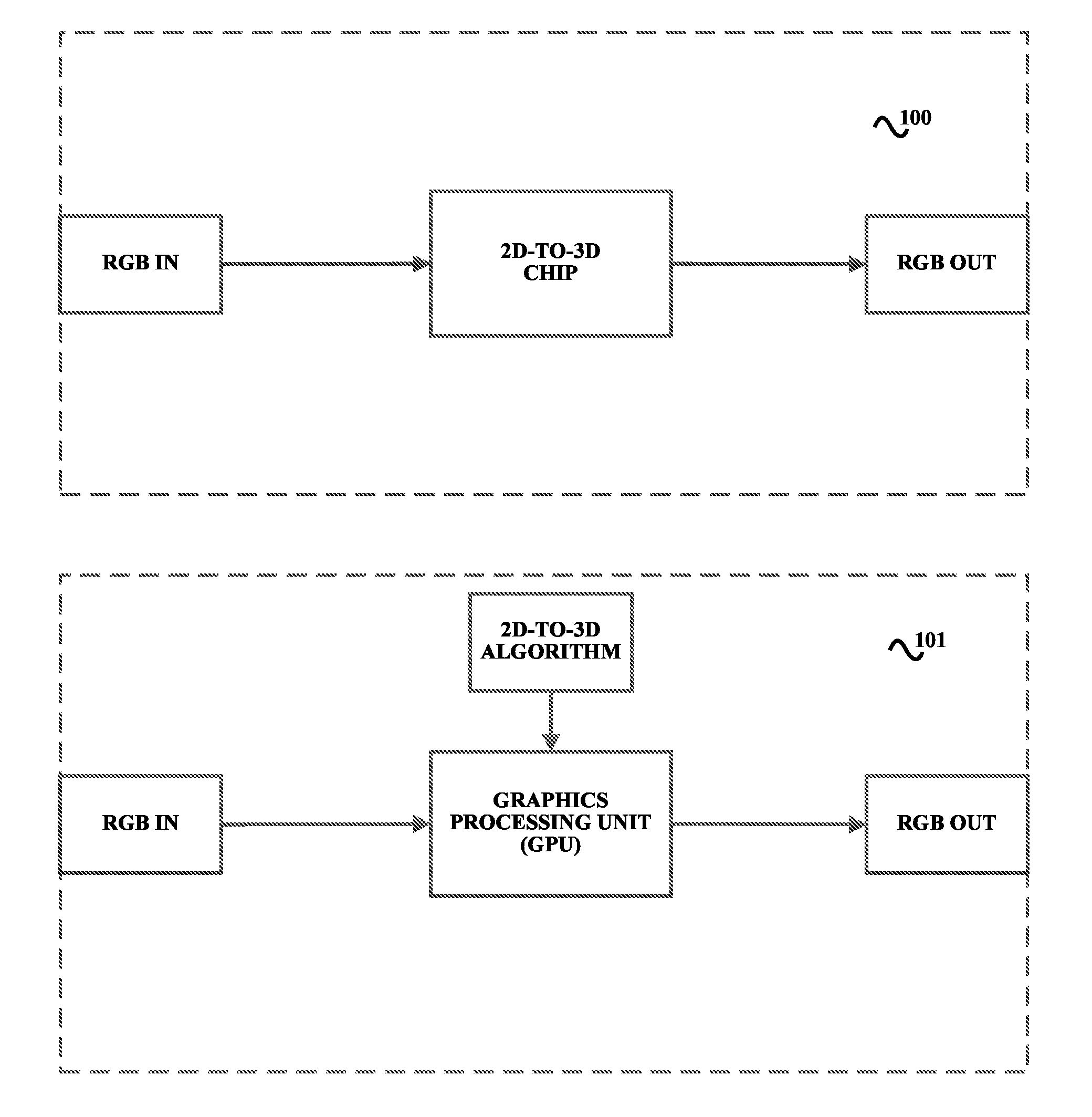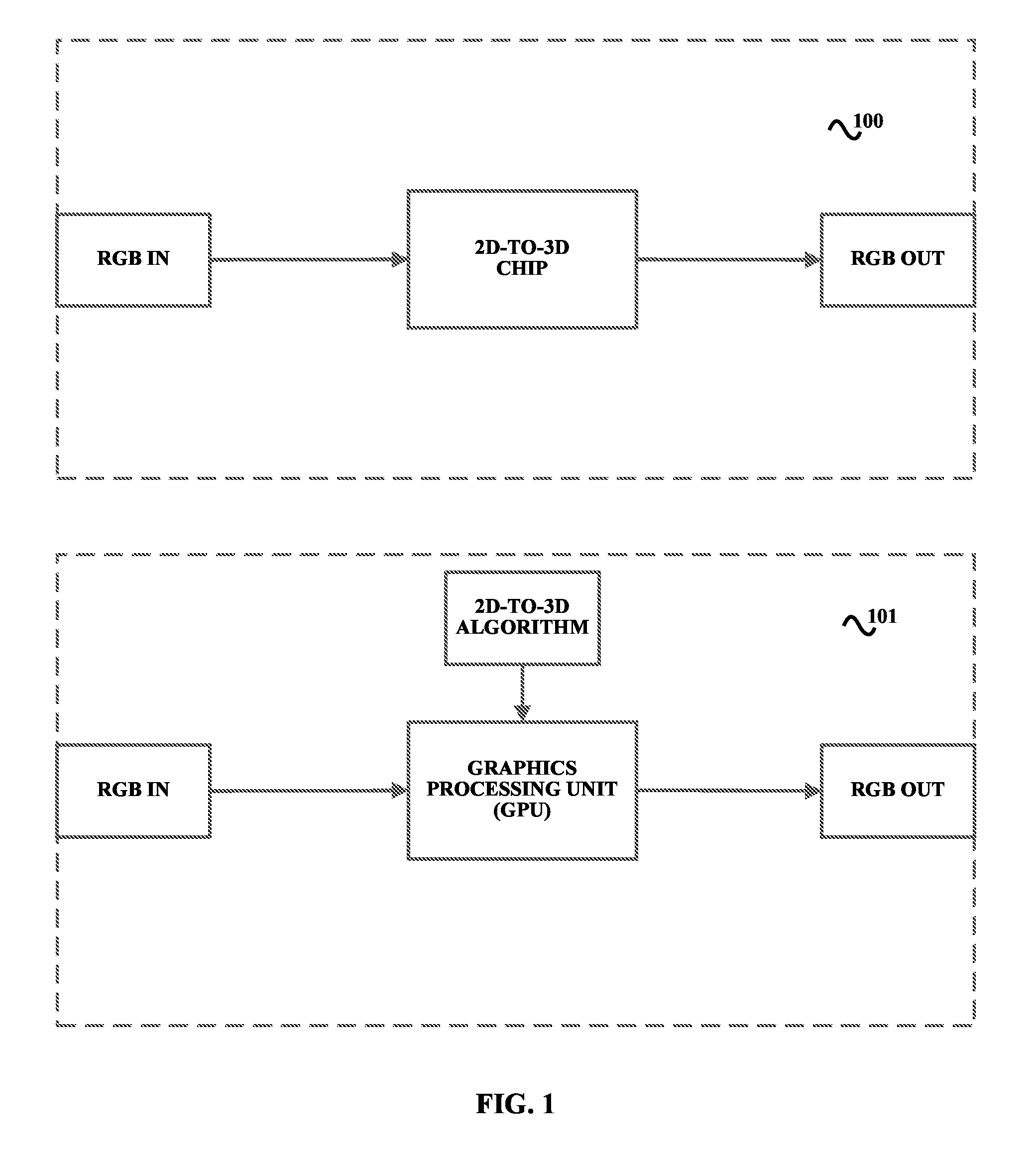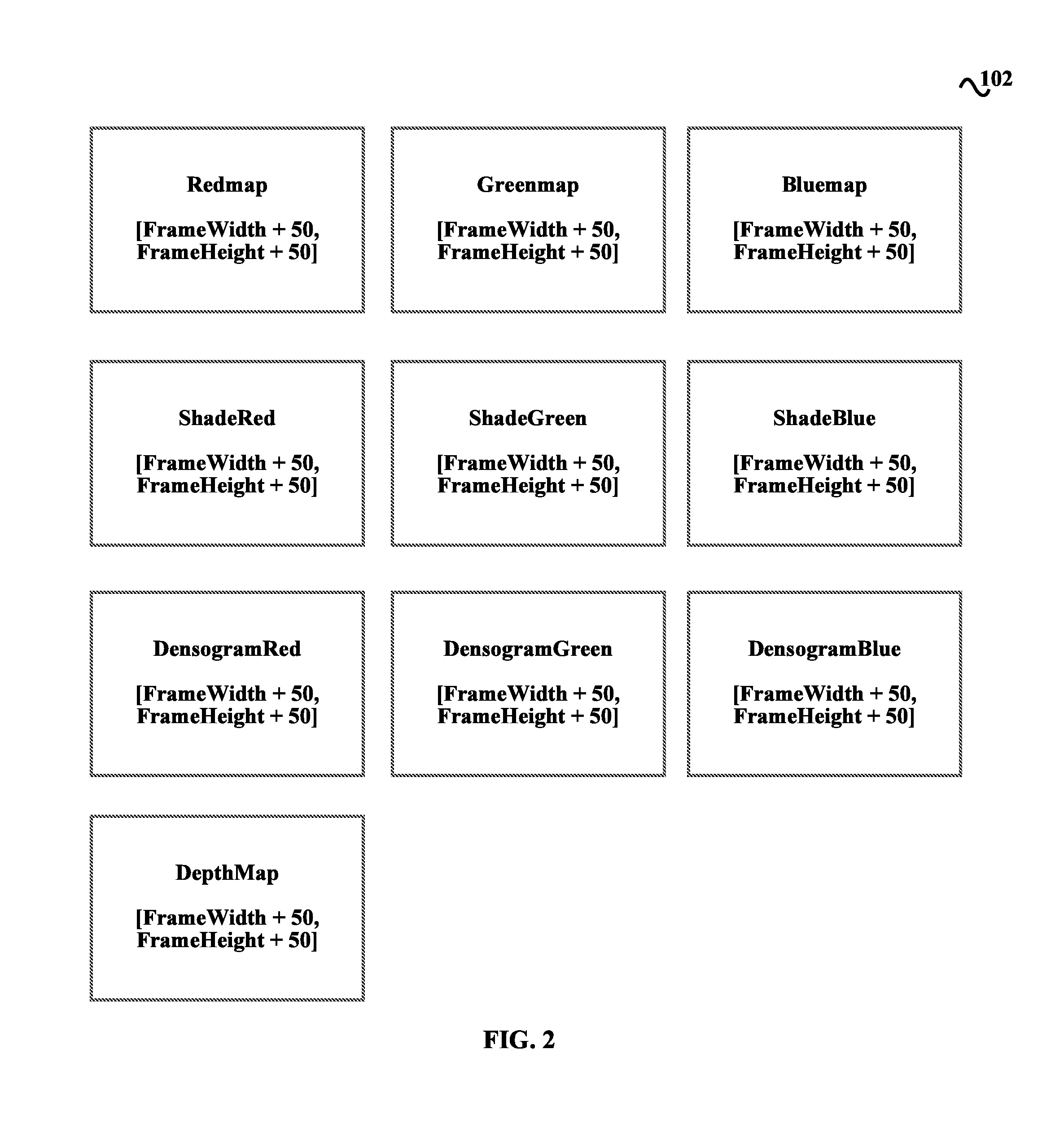Method for automated realtime conversion of 2D RGB images and video to red-cyan stereoscopic anaglyph 3D
a technology of stereoscopic anaglyphs and 2d rgb, which is applied in the field of 2d to 3d conversion, can solve the problems of tv manufacturers who have so disappointed in the sales numbers of 3d tvs, the failure of the “3d cinema at home” market strategy of large consumer electronics manufacturers in financial terms, and the inability to quickly anti-alias a digitally sharpened image. , to achieve the effect of suppressing pixel-level flick
- Summary
- Abstract
- Description
- Claims
- Application Information
AI Technical Summary
Benefits of technology
Problems solved by technology
Method used
Image
Examples
Embodiment Construction
[0020]The best way to introduce the 2D-to-3D conversion method presented in this patent may be to discuss briefly how other existing 2D-to-3D methods work, and in what way the novel method presented in this patent differs from these existing methods.
[0021]Many of the automated 2D-to-3D conversion methods in existence use one or more of 4 particular approaches to calculating, or generating, depth. These 4 methods are:
[0022]1) Depth from Motion
[0023]2) Depth from Focus
[0024]3) Depth from Perspective
[0025]4) Depth from Position in Frame
[0026]The commonly used methods listed above typically generate a monochrome “depthmap” by examining the motion, focus and / or position and perspective present in a video frame. In addition, a function that can recognize and visually separate different objects (“object recognition”) visible in a video may be used to facilitate optical separation of 3D actors, objects and backgrounds in a frame—what would be done using techniques like object-masking and ro...
PUM
 Login to View More
Login to View More Abstract
Description
Claims
Application Information
 Login to View More
Login to View More - R&D
- Intellectual Property
- Life Sciences
- Materials
- Tech Scout
- Unparalleled Data Quality
- Higher Quality Content
- 60% Fewer Hallucinations
Browse by: Latest US Patents, China's latest patents, Technical Efficacy Thesaurus, Application Domain, Technology Topic, Popular Technical Reports.
© 2025 PatSnap. All rights reserved.Legal|Privacy policy|Modern Slavery Act Transparency Statement|Sitemap|About US| Contact US: help@patsnap.com



